Category: HVAC
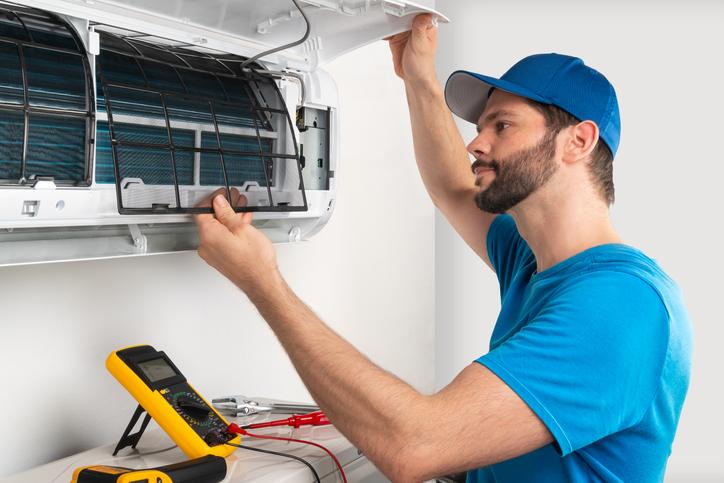
It’s not just the quality of an HVAC unit that counts, but how it’s installed. As an HVAC technician, your responsibility is to install these systems and detect any issues that can arise within their many different components and figure out how to correct them. However, there are several mistakes you can find yourself making if you aren’t careful with the installation process.
Since learning how to maintain and install HVAC systems are a significant component of your job, it’s just as important to know what not to do as it is to learn best installation practices. Here are some of the more common mistakes you may find yourself making after your HVAC training.
Ductwork is One of the Most Important Factors to Watch After HVAC School
It’s important to be sure you choose the correctly-sized duct for the HVAC unit you’re installing, and use high-quality materials in the process (e.g. using a heavy-duty sealant instead of tape, and adding R-6 insulation wrap).
If you don’t, it can create issues with both air flow and leaking, and potentially result in gaps, dust, loud noises, or an overheating furnace. As a result, the unit itself won’t function properly, and those living in the home will likely see their energy bills rise. Not only that, but up to 30% of the HVAC unit’s overall output can be compromised when not properly insulated.
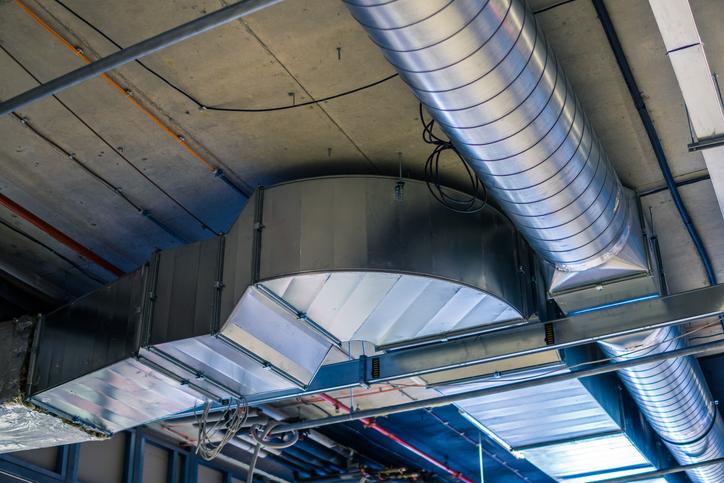
When it Comes to the Furnace, Size is Everything
By “size is also everything”, we don’t mean they need to be as big as you can possibly get them. Rather, the important thing to consider after finishing your HVAC training is to find a furnace that is sized proportionately to the one previously in place, and is also a newer model.
This not only helps with the flow of air in the home, but with the system’s efficiency as a whole. Should you not pick a correctly sized furnace, problems could occur. This includes the unit overworking itself to provide better cooling or heat if too small, or uneven temperatures if too big. However, be sure to double-check that the size calculations are correct, even if it’s technically the same size as the previous furnace.
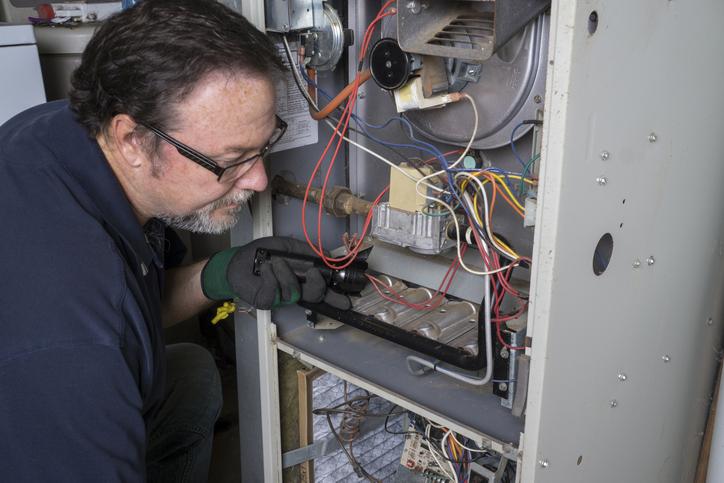
Make Sure Air is Properly Distributed at All Times
This is one of the most crucial parts of a successful HVAC installation, as it can otherwise lead to uneven cooling or heating. HVAC school students should be aware that proper air distribution design is a must, and that the ductwork is symmetrical in size to the unit’s output capacity.
To achieve this, apply new ductwork rather than the preexisting one, and be sure it’s distributing air evenly. Another of the more important aspects to keep in mind is proper ventilation. You’ll need to ensure the HVAC unit you’ve installed has a strong balance of both hot and cold air, and that the air is balanced and flows cleanly throughout the home.
Want to start your HVAC technician training?
Contact North American Trade Schools today!

Heating, ventilation, and air conditioning (HVAC) technicians specialize in keeping houses and the people that live in them warm in the winter and cool in the summer. Read these tips and tricks to make your customer’s home a firelit haven, sheltered from the icy elements outdoors.
Seal Any Gaps When You Become an HVAC Technician
One of the main causes of a cold house is gaps around the doors and windows that let hot air out and cool air in. When you become an HVAC technician, the first thing you should do when you get a new client is examine their home for any unsealed gaps.
They can use an acrylic-latex caulk to seal any gaps around the window frames or a spray foam that will expand into any unfilled crevices. This will also help clients to save on their energy bills, as they will need less energy to heat their homes.
If the house has a fireplace, the chimney pipe could be letting cold air in,too. When the fire is not lit,advise clients that they should close the damper. However, make sure they know to check that all embers have fully burnt out – otherwise, smoke could fill their home.

Reverse Any Fans
You might assume that fans are only useful in the hot, summer months when you need to cool down. However, fans can also keep a house warm. If you reverse the direction of the fan so it’s spinning clockwise, it will stop the hot air from rising, and push it back down to warm the room. This can be a very useful tip for many clients.
Look After The Furnace and Outdoor Unit
The majority of HVAC systems have an outdoor unit attached to the outside of the house. Even though this is built to withstand cold temperatures and heavy snow, it is still a good idea to shelter it in someway. You could build a small, temporary shelter out of wood, or use a plastic cover. This will protect the fan from freezing so that your house stays warm all winter.
At HVAC college, you may also learn the importance of checking the furnace filter. This can become dirty over time and needs to be regularly cleaned and replaced. A dirty furnace filter will not be as effective, and will mean that the house needs to use more power to generate heat.
Thermostat or Portable Heater? It Depends
Both thermostats and portable heaters have an important role to play during winter. To save energy, it’s recommended that clients program the thermostat so that it automatically turns down when they are asleep or at work. The recommended temperatures are 20 degrees Celsius in the mornings, evenings, and weekends when at home, and 10 degrees Celsius when at work, asleep, or out of the house.
If a client needs to heat up their house fast,you should advise them that turning the thermostat to max is not the answer. This will drain energy and could damage the thermostat. It also won’t be effective, because the thermostat is designed to maintain a constant temperature.
In these situations, it’s better to use a portable heater. These can generate a lot of heat from electricity in a short amount of time. However, clients need to be sure to switch them off when they are not in the room, so as not to create a health and safety risk.

Do you want to find out more about HVAC certification?
Contact North American Trade Schools today!

Since heat pumps are such a common tool in the heating, ventilation, and air conditioning (HVAC) industry, aspiring technicians should expect to become very familiar with them throughout their education and future career. Read on for an introduction to heat pumps to get you warmed up!
Learn How Heat Pumps Work With an HVAC Diploma
Heat pumps are not a new technology. In fact, the first heat pump was invented in 1948 by Robert C. Webber. Since then, the technology has been developed to resemble the air conditioning and heating units we have in our homes and offices today. HVAC technician courses will give you the opportunity to learn hands-on how this technology works.
Heat pumps can provide both heating and cooling services. In heating mode, heat is absorbed from outside by the condenser coil and transferred to the interior space via air vents. Even on cold winter days, heat pumps are able to collect warm air from outside. However, if there’s not enough warm air outside, heat pumps can use electric energy or an additional gas furnace to provide extra heat.

In air conditioning mode, the cycle is reversed. Warm air inside the house is pulled into the system with a motorized fan and transferred outside, usually behind or underneath the condenser coil. Cool and dehumidified air then enters the home through the air vents.
Heat Pumps are Energy Efficient
Eco-conscious homeowners will be relieved to discover that heat pumps are incredibly energy efficient. As you will learn in HVAC technician training, heat pumps generate 4 units of thermal energy per 1 unit of electricity used – that’s an efficiency rating of 400%!
In contrast, electrical heaters are 100% efficient, meaning that they generate 1 unit of thermal energy for every 1 unit of electricity. As well as this, heat pumps generate zero emissions, so are a great option for people that want to warm or cool their homes without damaging the planet.
Air Source vs. Ground Source Heat Pumps
As an HVAC technician, you will need to know about two main types of heat pumps: air source and ground source. Air source heat pumps are the most common type and absorb or reject heat from the outdoor air.
As the name suggests, ground source heat pumps get heat from the ground or from water. These are sometimes referred to as geothermal heat pumps and are actually slightly more efficient than air source systems. However, they are more expensive and complicated to install as the systems will need to be built into the soil around a home.
What are the Main Heat Pump Parts?
Air source and ground source heat pumps are made up of a number of components. These include:
- Compressor– to move the refrigerant through the system
- Control board – to control whether the system is in cooling or heating mode
- Condenser coil – to transfer heat outside in cooling mode
- Evaporator coil–to transfer heat inside in heating mode
- Refrigerant – a chemical substance that moves heat through the system
- Thermostat – to choose the desired temperature
Are you interested in a HVAC diploma?
Contact North American Trade Schools to find out more!
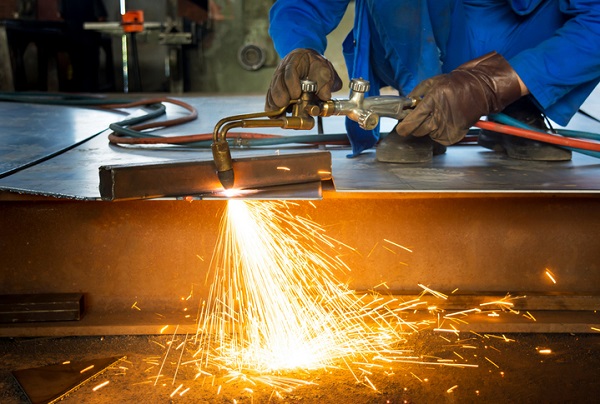
Acetylene torches are to HVAC (heating, ventilation, and air conditioning) technicians what calculators are to mathematicians: an essential tool with many uses. Providing one of the most powerful methods of welding and cutting metals, this tool is widely used in the industry to fix leaks and solder line sets.
But like any gas-powered tool, if you want to use it properly, there are a few key things you’ll need to know and some safety regulations you’ll need to follow. Read on to learn all about acetylene torches and the role they will play in your HVAC career.
What is Acetylene & How Can You Use it?
As one would expect, the basis of an acetylene torch is the hydrocarbon compound called Acetylene. What you may not know is that this element can get really, really hot. In fact, acetylene produces the third hottest chemical flame, and can reach an astounding 3,300 degrees Celsius when mixed with oxygen.
Acetylene is a highly unstable compound. However, once you combine it with another chemical, you can use acetylene safely and easily while still benefiting from its thermal capabilities. Oxygen is the substance most commonly combined with acetylene – but it’s important to note that the term “acetylene torch” can also be used to describe any type of oxy-fuel torch where other gases such as propane and propylene are used.
Regardless of which chemicals are involved, the two gases are present in two separate gas tanks, which are connected to the torch by two metal hoses. The flame is produced when these two gases are passed through the hoses and combined. When this flame contacts metal, it produces a chemical reaction that initiates a process known as oxyfuel cutting.
Acetylene Torch Safety Regulations
As with any power tool, it’s important to know how to safely handle an acetylene torch before you put it to use. One advantage of HVAC school is learning the safest ways to handle the equipment you’ll encounter in your career. Graduates of North American Trade Schools will learn the safety regulations and precautions they need to take to operate an acetylene torch.
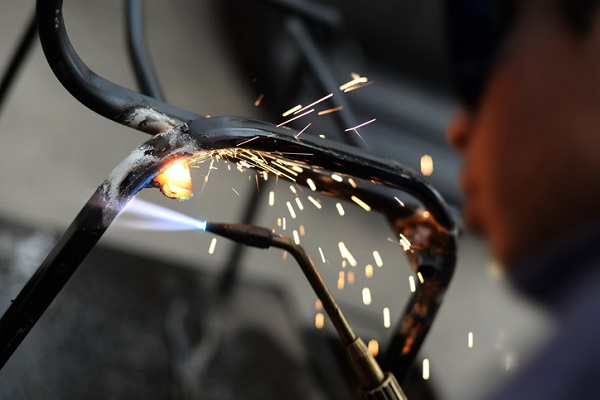
One procedure you will need to learn is how to check your acetylene torch before using it to make sure it’s functioning properly. Firstly, you should check that the torch is closed, and ensure that the pressure adjustment screws are blacked out. Then you can separately open the gas cylinder valves and adjust the regulator p/a screws to change the pressure settings. Next, you can open and close valves separately and make any other changes to the pressure settings on the regulators.
HVAC Technician Training 101: Using an Acetylene Torch
HVAC technician training will allow you to learn how to use these power tools through a hands-on approach, but it’s good practice to know a bit about the steps in using them before you begin your studies.
To use an acetylene torch, you’ll first have to light it by purging the oxygen and fuel gas lines – separately – and opening the fuel gas valve slightly. Next, using a striker, ignite the flame. You can then adjust the gas flow to make the flame form a sharp tip. Now your acetylene torch is ready to use.
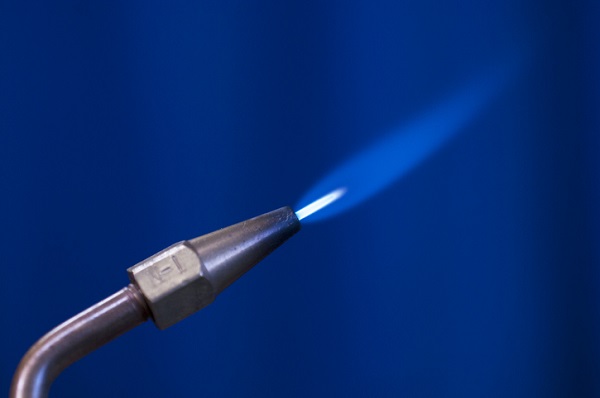
Once you’re finished with the torch, you can shut it down by closing the oxygen and fuel gas torch valves. If you don’t plan on using the torch for a while, make sure that all the regulator gauges read zero.
Want to earn your HVAC diploma?
Contact North American Trade Schools for more information!
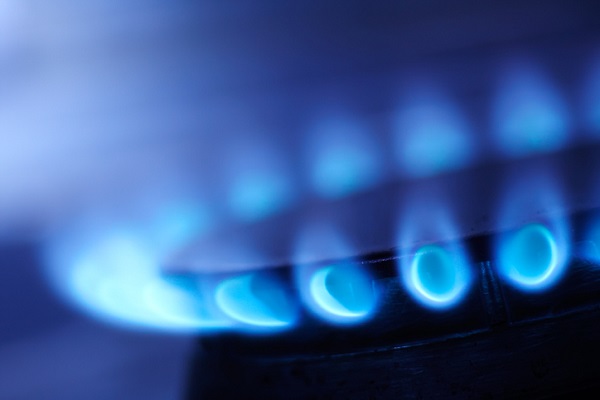
Fuel gases help fuel heating systems, provide energy for transportation, and are used for welding—but what are they, really? Fuel gases are gases that, when mixed with oxygen or air, become combustible. They can apply to several different processes, and can be used for a number of different industrial applications. Since it’s very important for students training to become an HVAC technician to know how to practice the safest possible gas-handling procedures, learning the basics about fuel gases is a good idea.
While there’s a lot to learn about fuel gases, it’s worth knowing some of the basics beforehand, so that students have a solid idea of how fuel gases apply to heating. Here’s what students in HVAC training should know.
HVAC School Students Should Familiarize Themselves With the Different Types Used
One of the most important things to remember about fuel gases is that there are a number of different types that can be used. Some of the most commonly used are hydrogen, carbon monoxide, and ethylene. However, we’ll be focusing specifically on acetylene, methane, propane, and propylene. These four in particular are worth remembering for those in HVAC training, because each of them are comprised of hydrocarbons, either partially or in full.
Acetylene is considered the most efficient and productive fuel gas, producing the hottest and most concentrated flame. It can also be used for both welding and cutting, the only kind of commercial fuel gas that can do so. Methane is what natural gas is primarily made of, and is most often used for heating. Its combustion properties can also vary, and can be used for cutting purposes in some cases.
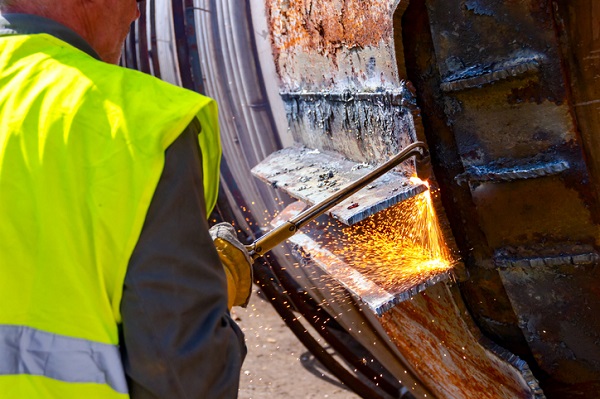
Propane has a lower flame temperature than acetylene when mixed with oxygen, and has the lowest flammability range among the most common fuel gases, but can be used for various purposes such as heating, brazing, melting and drying. Lastly, propylene’s double bond means it burns hotter and has a higher flame temperature than propane, and is often used during situations that call for a higher process performance.
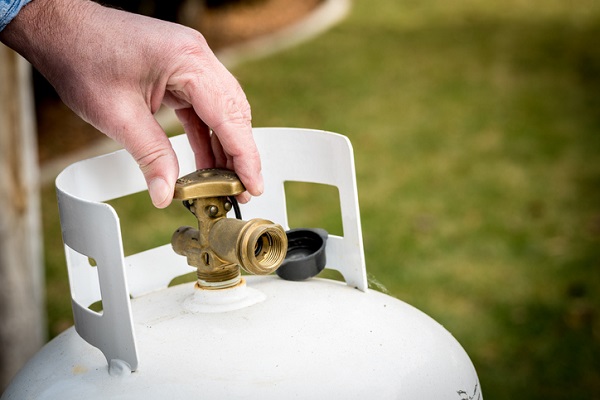
Different Fuel Gases Have Different Heating Values and Other Properties Between Them
Since a big part of HVAC school involves learning about fuel gases and their respective characteristics and properties, it’s worth familiarizing yourself with the different heat values between each type of fuel gas. For example, acetylene has a gross heating value of 1,498 btu/ft3 and 21,569 btu/lb (British thermal units per cubic feet and pounds). Meanwhile, propane has a gross heating value of 2,572 btu/ft3 and 21,564 btu/lb, and propylene has 2,336 btu/ft3 and 21,042 btu/lb. Therefore, acetylene needs much less than propane or propylene to produce the necessary heat.
It’s also worth remembering that fuel gases each have different carbon to hydrogen atom ratios. This means that the efficient burning of the gas will require various amounts of oxygen to be used depending on the fuel gas type. Furthermore, some fuel gases are natural, while others are manufactured. Natural fuel gas largely consists of methane, while gases like ethane, propane and butane are considered natural gases. Natural gas is also considered the most commonly used fuel gas type today. Meanwhile, manufactured types of fuel gases include hydrogen, acetylene, biogas, coal gas, and blast furnace gas among others.
Want to start your HVAC technician training?
Contact North American Trade Schools for more information!

HVAC technicians are required to have a complex skill set to address different tasks. Every day might provide different challenges, from identifying maintenance risks to diagnosing electrical and mechanical faults to cleaning a system or doing warranty service. Whether you work in a commercial or residential setting, customer service skills also play a big role in your success.
Skilled trades people trained in HVAC are in demand and many employers stress the importance of customer service skills. While it helps if you already have some experience with customers, these so-called soft skills can be learned. With practice and guidance, you will quickly see the variety of reasons these skills are important. Here are a few ideas to get you started.
Short Term Comfort Guarantees Long Term Comfort
If you work in a residential setting you know, of course, that you’re working in someone’s house. Ultimately, you are contributing to their overall comfort of their home. Installing or maintaining an air-conditioner when it’s hot or making sure a furnace runs all winter is the main job in making people feel comfortable. However, the customer’s comfort while you’re actually in their home is just as important.
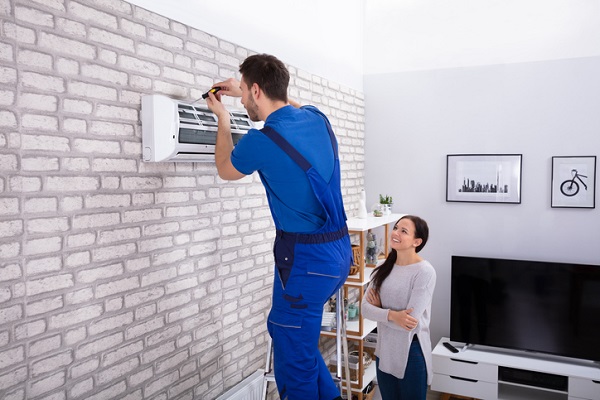
An experienced technician who has already had a long HVAC career will say that being friendly and communicative means that they get called back. A customer that feels at ease while you work is also more likely to recommend you to others, which will only help you in the long run.
Customer Trust Adds Value to HVAC Training
There are a number of ways in which you can build trust with a customer after your HVAC training. For example, it can be helpful to explain the work you are doing, give updates, and leave room for customers to ask questions. These types of exchanges add value to your work because a customer will have a better understanding of your job and see that you know what you’re talking about.
When you break down what you do in everyday language and recommend preventative maintenance it also demonstrates to a customer that your goal is to have a system that will not need extra, costly repairs. Of course, if their system does need more attention in the future, they will have confidence that your return will be worth it.
Sensitivity Gives Everyone Options
While there is a lot of joy involved in installing, repairing and maintaining the systems that people rely on every day, you sometimes have to deliver bad news. When you go out on a call because a furnace doesn’t seem to be working or the AC has stopped, your job may be to tell people they must do an expensive repair or replacement. The way a technician delivers this news must be sensitive to the situation and show understanding.

Again, communication skills come into play. Whatever the situation might be, it is important that you be able to explain a customer’s options clearly. Sensitivity to different levels of technical understanding as well as sensitivity to financial impact will keep you and your HVAC business as an option for more customers in the future.
Want to start your career?
North American Trade School has the courses for your HVAC diploma!
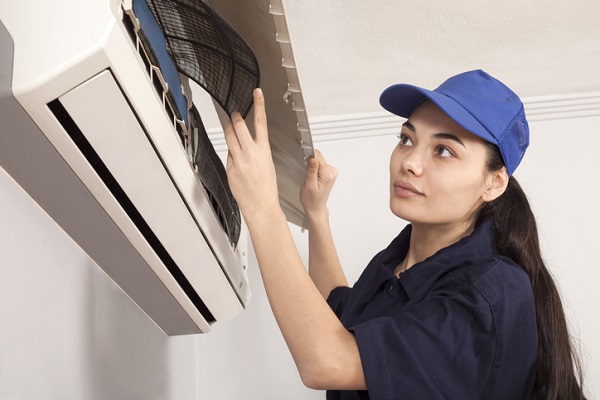
In HVAC training you will learn about fasteners, tools, codes and regulations as well as other knowledge and skills that are required for the job. However, one skill that you should not overlook is time management. If you’re looking to break into the HVAC industry, managing your time effectively can help you succeed.
Time management skills allow you to stay on track and are the best way to prepare for unexpected circumstances. Managing your time effectively also keeps you calm and reduces your stress, so that you are able to work in a focused, effective manner. Read on for more about why time management will matter in your career in the HVAC industry!
Your HVAC Career Will Be Full of Surprises
A major benefit of managing time effectively is that it helps you account for unexpected emergencies, calls and problems. In a job where you are servicing equipment and appliances, you may be called in for an issue and arrive only to discover that the problem is larger than you originally assumed it would be. This adds time to your task and delays the rest of your schedule.
If you’ve organized your day to allow for last-minute changes or service calls that run longer than expected, you’ve given yourself plenty of extra time so that you can still complete your day’s schedule. That way, if you find yourself in a situation where you need to pick up a part or change your strategy, you’ll have enough wiggle room to do so.
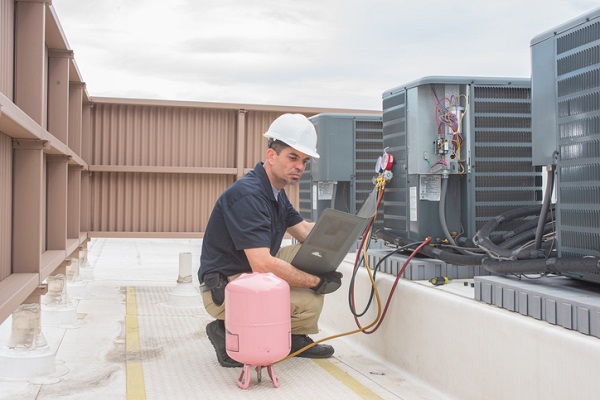
Time Management Helps You Save on Travel
When you are working in an HVAC career, throughout your day you may be required to travel to multiple locations that are quite dispersed. The more time you spend on the road, the less you can get done. This may cause your schedule to run behind or may not be an economical use of resources such as fuel. If you’re working with a team, failing to coordinate locations can cause unnecessary travel amongst employees.
Learning how to plan days in a way that makes sense for travel helps you manage your schedule. Establishing the most direct routes between locations is also helpful to save on time and costs, while ensuring that all of your goals for the day are accomplished.
Time Management Keeps Your Stress Levels Down After HVAC College
When tasks go unfinished or jobs are rushed, the quality of your work isn’t something you are likely to be proud of. This can cause your stress levels to rise and reduce your job satisfaction. After you have your HVAC diploma, you will want to show your skills and knowledge and perform to the best of your abilities. Making sure you have enough time and planning to finish what you’ve started helps you stay focused and healthy for a long and rewarding career. This also keeps you from constantly feeling time pressure or fearing that you won’t finish your work, which is another major stressor.
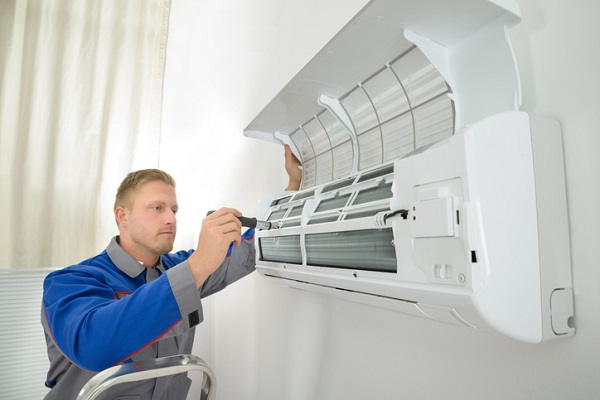
Scheduling extra blocks in your schedule allows you to thoroughly inspect situations and consider solutions, rather than applying quick fixes that won’t last as long. Not only will this help you stay focused and calm, it will make you a more successful professional because your work will be top-notch.
Are you interested in studying at HVAC college?
Contact North American Trade Schools to find out more!

Have you been thinking about pursuing a new career? Perhaps you’re stuck in a rut at your current job or you’re just out of school and looking at potential career paths. Whatever your reasons, pursuing a career as an HVAC technician could be an excellent choice for you.
HVAC technicians are in demand in Ontario. Here, population and economic growth is leading to lots of new construction of both residential and commercial buildings. That means if you become an HVAC technician, you have opportunities to work in a wide variety of exciting settings in Ontario.
If you’re wondering about whether you’re the right fit for an HVAC career, there are fortunately a few ways to find out. HVAC technicians are hands-on people. They love working with machines, solving problems, and they certainly aren’t afraid of getting a little dirty from time to time. Plus, many HVAC technicians love the satisfaction of knowing they’re helping to keep people comfortable and safe.
Check out this useful infographic for signs that becoming an HVAC technician may be for you!
Signs You’re Ready to Become an HVAC Technician
Are You a Hands-On Problem Solver?
HVAC technicians love working with machines
They’re not afraid to get their hands dirty
Sometimes they’ll work outside
Other times they may find themselves in cramped spaces
They diagnose problems and get them fixed
Are You Feeling a Bit Bored in Your Current Job?
Being an HVAC technician is not like a regular 9 to 5 office job
You’ll get to tackle new challenges every day, such as:
- Troubleshooting problems
- Installing new HVAC systems
- Performing routine maintenance
- Inspecting systems
- Communicating with customers
- Testing parts and equipment
You’ll travel to different worksites, like:
- Homes
- Shops
- Factories
- Offices
- Hospitals
- Anywhere with heating, ventilation, or air conditioning!
Are You Looking to Make a Difference?
People depend on HVAC technicians to keep buildings:
- Cool in the summer
- Warm in the winter
- Well-ventilated year-round
HVAC technicians do more than just help people stay comfortable
They also keep them safe:
- Nursing homes need HVAC to protect residents on cold or hot days
- Restaurant kitchens rely on HVAC to stay well-ventilated for safety
- Hospitals need HVAC to reduce infections and keep patients safe
- Workplaces rely on HVAC to avoid dangerous working conditions
Do You Want a Successful Career?
In Ontario, there is currently a shortage of HVAC technicians
The demand for HVAC technicians is very strong
94% of HVAC technician work full-time, compared with 79% for all other jobs
Strong demand means HVAC technicians are paid well:
The average salary for an HVAC technician is $51,675
Experienced technicians make up to $87,500!
Sources:
https://www.jobbank.gc.ca/marketreport/outlook-occupation/7533/ON
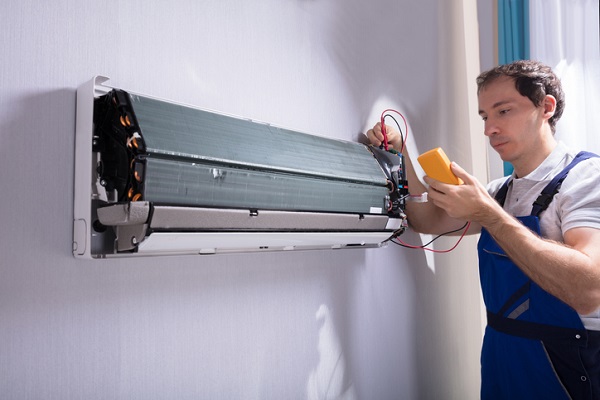
HVAC stands for heating, ventilation, and air conditioning, and as an HVAC technician you might be responsible for installing, maintaining, and repairing any of these systems. An HVAC diploma provides you with hands-on training in order to get you going in your career, no matter what type of system of you focus on.
One aspect of working as an HVAC technician is knowing how to use the right tools for the job. There are multiple instruments that you may encounter and utilize in your training or in your career, including testing devices.
Continue reading to discover a few of the testing devices frequently used by HVAC technicians.
1. An Infrared Thermometer Can Help You Spot Problems from a Distance
An infrared thermometer (IR) uses infrared technology to measure an object’s temperature from a distance. Sometimes called laser thermometers, IRs calculate the infrared emission of an object to determine its temperature. IRs may be used to quickly locate overheating circuits and equipment without requiring direct manual intervention. By adding an IR to your HVAC technician toolbelt, you can find and repair potentially hazardous components.
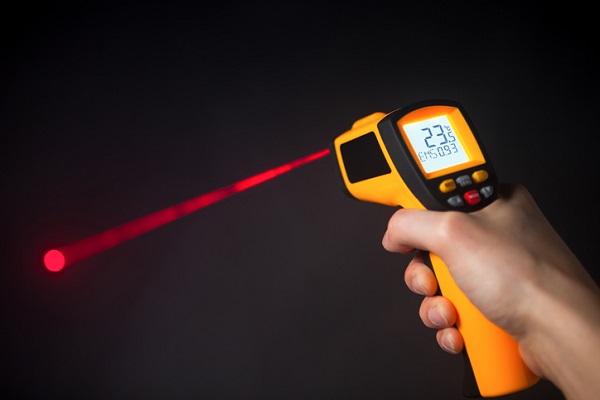
2. A Digital Multimeter Provides Important Information About Electrical Components
A digital multimeter (DMM) is a diagnostic tool employed by technicians working with electrical components, including by students developing their electricity-related knowledge at HVAC college. The primary purpose of a DMM is to measure electrical values—namely amps (current), volts (voltage), and ohms (resistance). The advantage of a DMM is that it combines the efficacy of multiple single-task meters into one comprehensive device. In one single reading, the user can receive information that would otherwise require three to four separate machines and three to four separate readings.
3. Leak Detectors Can Help You Detect Leaks When You Become an HVAC Technician
Leaks are a problem that HVAC technicians are often called upon to address. Such leaks may be caused by abrasive substances, physical damage, equipment malfunction or a variety of other factors. What is just as important as the problem itself is the ability to detect it. If a gas leak, for example, goes undetected for a prolonged period, it might become a health and safety hazard.
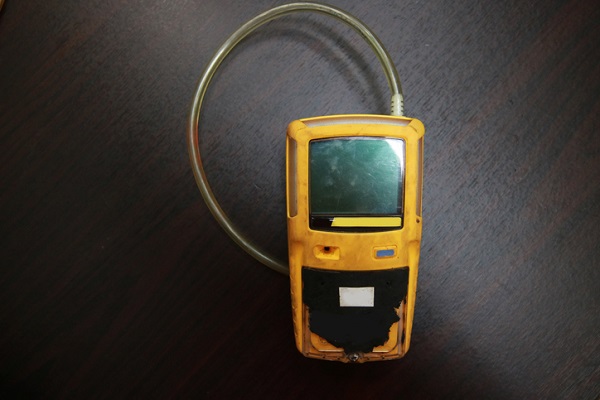
A leak detector helps you see what is otherwise invisible. If a system is utilizing compressed air to generate energy, for example, and that system is leaking, it might result in decreased productivity because energy will be lost. After your HVAC technician training, you may find yourself called upon to help detect and fix leaks and in those cases a leak detector will prove invaluable.
4. A Vacuum Gauge Is a Useful Tool to Have for Refrigeration Systems
A vacuum gauge is an instrument that measures the pressure in a vacuum. They are one of the most important tools used in refrigeration. As an HVAC technician, a vacuum gauge allows you to test the pressure of liquids and gases in cooling systems, which is essential when working with different refrigerants. Vacuum gauges are also necessary when servicing or replacing a refrigeration system as they provide you with important information about the system.
Do you want to become an HVAC technician?
Check out the North American Trade Schools to find out about our programs!
 It’s that time of year again, where summer is in full swing and air conditioning units become our best friends. However, you might not know that there are a number of ways you can help someone’s home have the most optimal temperature possible, and the way it’s being done is getting increasingly modernized. Just as technology continues to evolve, so do trends in the HVAC industry.
It’s that time of year again, where summer is in full swing and air conditioning units become our best friends. However, you might not know that there are a number of ways you can help someone’s home have the most optimal temperature possible, and the way it’s being done is getting increasingly modernized. Just as technology continues to evolve, so do trends in the HVAC industry.
While you may already be familiar with trends such as smart thermostats, digital zoning, geothermal/solar HVAC systems, and DeVAP, the breadth of HVAC technology actually goes even further than one might think. In fact, it’s an industry that’s modernizing in multiple areas, and these are just a few examples. Here are four trends you need to know about if you’re studying for a career in HVAC.
1. Smart HVAC: A Tool You’ll Probably See Down the Road in Your HVAC Career
No, smart technology isn’t just for your phone. The HVAC world has been experimenting with ways to make air conditioning more efficient and future-forward. Using technology such as mobile apps, motion sensors, and even thermostats, smart HVAC is increasingly becoming a trend in the industry, with technology already available to control an HVAC system remotely. Some HVAC systems and smart thermostats can even alert you about necessary maintenance. Considering how often HVAC systems can break down, this technology is ideal for those looking to modernize their home — and a fascinating tool for those in an HVAC career, as well.
 Smart technology has increasingly become a common presence in the HVAC world
Smart technology has increasingly become a common presence in the HVAC world
2. HVAC Technicians Know Duct Sealing is Effective and Simple
Thanks to companies like Aeroseal, this technology may not seem too futuristic in nature, but is no less impressive. As ductwork can start to become cracked and/or worn out with time, duct sealing can help solve the problem to avoid affecting the performance of your HVAC system — or worse, leakages. Through a water-based substance being sprayed onto the ductwork, it works to seal holes and cracks in vents and air ducts. In other words, it can stop ducts from leaking and humidity from entering your home, all while your energy bill starts tumbling down.
3. Hot Water Recirculating Systems: A Plumbing System You’ll See as an HVAC Technician
Here’s a technology that can go right under your kitchen sink and save you time as well. By moving hot water quickly from a water heater to a faucet, hot water recirculating systems move water without waiting for it to rise to warmer temperatures, and without the need for low water pressure. Often being activated by a thermostat, the hot water recirculating system is also known for its capacity in saving water, as some types of recirculating systems can save up to 15,000 gallons of water per year.
 HVAC technology can often be controlled remotely from a smartphone
HVAC technology can often be controlled remotely from a smartphone
4. Work on 3D Printed Air Conditioners During Your Career
You might be dealing with some odd shapes and sizes if you want to become an HVAC technician. Using a 3D scanner and computer-designed 3D model, you can make a digital copy of an object to build and use as an air conditioner, which then soaks water like a sponge, letting air pass through it. As a result, water evaporates and the air becomes cooler. Users can get creative with customizing it as well, as they can configure parts and its design to fit their needs. These printers are so impressive that the very first one was sold in China in 2015 for around 40,000 yuan (or more than $7,600 today in Canadian dollars).
Looking to study at an HVAC college?
Contact North American Trade Schools to learn more about our HVAC Technician diploma program!




